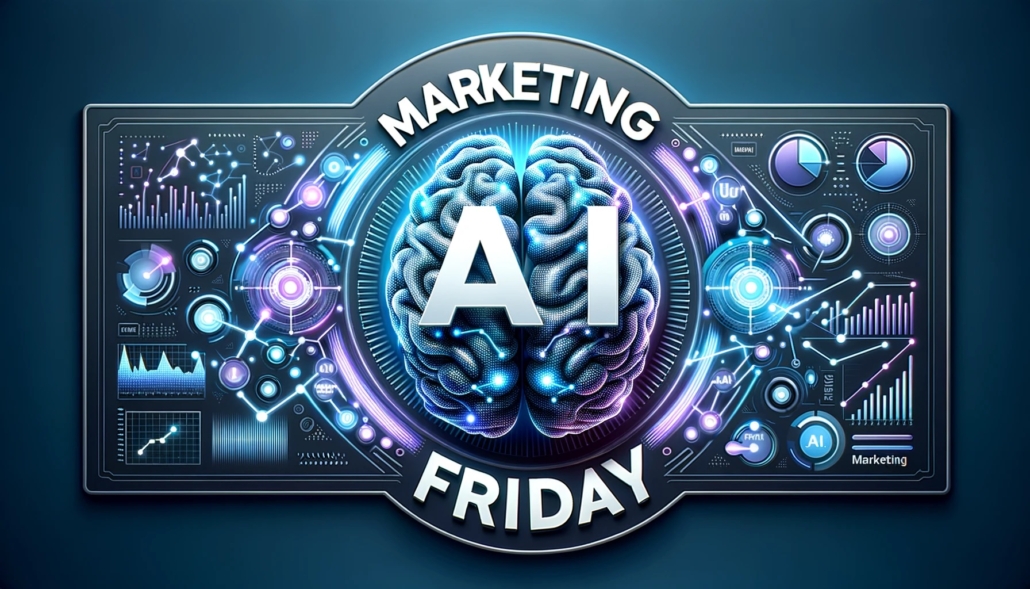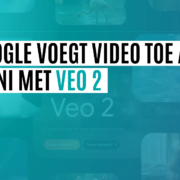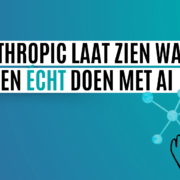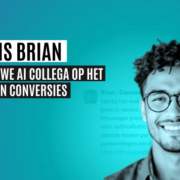16 Key Marketing AI Trends in 2025
AI is changing the way we work, do business and communicate. What are the key developments and trends to watch in 2025? In this blog, we share 16 marketing AI trends that will have a major impact on marketing, entrepreneurship and business in 2025. These trends also form the basis of the marketing AI webinar we hold monthly.
1. AI-driven content creation
AI is getting better at creating text, images, videos and audio. We will be less and less able to tell the difference between content created by humans or that AI helped with.
Tools like ChatGPT, Gemini and Claude help you create plans, write social posts, newsletters, code and product descriptions. For visuals and videos, there are tools like Midjourney, Flux, Runway, Sora, Veo 2 and KlingAI. Audio can be created with ElevenLabs or Hume, for example.

2. Collaborating with AI colleagues in 2025.
AI systems are increasingly becoming colleagues you can collaborate with within your existing work environment. This makes for a more efficient workflow and better results.
We already work with a team of AI colleagues in Slack, which we will improve and expand this year. You too can use these specially trained AI colleagues for content planning, writing for social media, email and blogs, and data analysis.
3. Enhanced Reasoning (Reasoning).
AI models are getting better at making complex decisions, They can follow a logical line of reasoning (Chain of Thought) and learn from their own results to improve themselves. This makes them more accurate and effective at complex tasks such as strategic planning, analysis, forecasting and problem solving.
The breakthrough began late last year with OpenAI's o1 model, which analyzes problems thoroughly before taking action. Google followed with the interesting Deep Research feature in its Gemini platform, and Chinese start-up DeepSeek came up with the open-source DeepSeek V3 model with reasoning capabilities.
4. Advanced memory (Memory).
AI gains a permanent memory, allowing it to remember context and previous interactions. This means AI recognizes a user instantly and can build on previous conversations. As a result, responses become increasingly relevant and customized.
An example of this is AI chatbots that can immediately give appropriate suggestions because they know what was discussed in previous conversations. This makes the interaction more natural and effective.
5. Real-time video and visual AI (Vision).
AI with visual capabilities can recognize and analyze images, videos and objects, both in the real world and on your screen. This is already possible with ChatGPT and Gemini 2.0, and the capabilities are expanding.
This allows you to use AI as a real-time assistant during your work. For example, when creating content or optimizing your homepage. The AI watches your screen and provides immediate feedback and improvement suggestions. Do you get stuck in a program? Then the AI explains step by step what you need to do to move forward.
The real-time video feature makes it possible to use AI in everyday life as well. For example, test it out by showing the contents of your refrigerator and asking what you can cook dinner with it. Or you can ask which products are healthy and which are better eaten in moderation.
6. Advanced voice interfaces (Voice).
AI is getting better at processing, understanding and generating spoken language.
ChatGPT and Talk to Gemini's voice feature already allows you to have natural conversations. ChatGPT's voice feature accesses the Internet, allowing it to instantly look up information and be used for "voice search. Tools such as ElevenLabs and Hume allow you to create natural voices, including a copy of your own.
We see speech being used not only for face-to-face conversations with AI, but also for customer service chatbots. This also makes AI more accessible to people with disabilities.
To be found through voice search, your content must connect with how people talk. You do this by:
- Use conversational language and specific search terms that fit natural queries.
- Integrate FAQs into your content.
- Add structured data (schema markup) so that search engines better understand your content.
- To focus on local content because many voice searches are location-based.
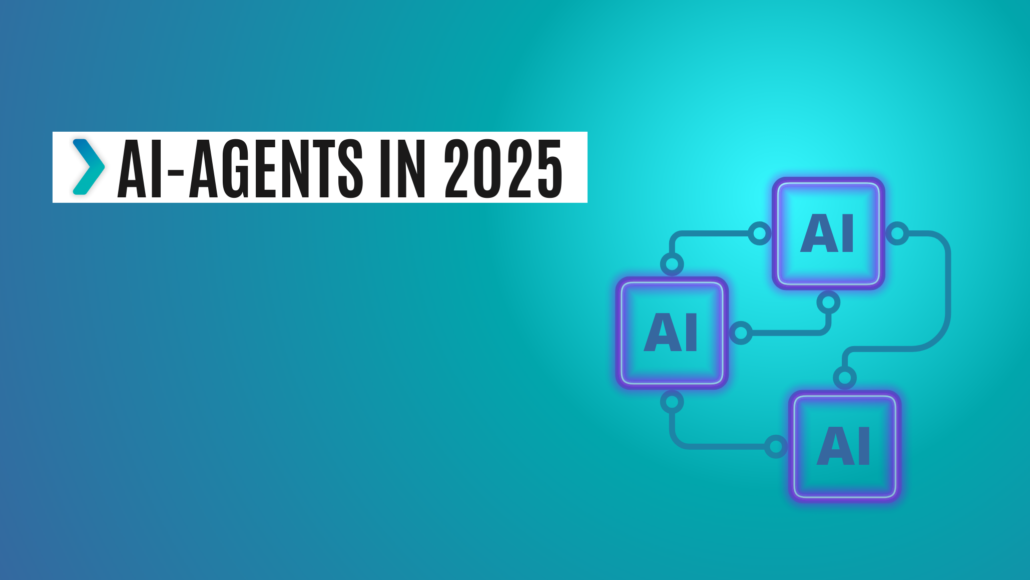
7. Automation with 'AI agents'
The development and application of AI agents will take off in 2025. These are smart systems that perform tasks independently based on clear goals and instructions. They combine various AI capabilities to make decisions, execute actions and improve their performance.
In this first phase, AI agents still work under human supervision. In the future, they will become more and more independent and will also cooperate with other AI agents.
It allows organizations to automate routine tasks. This leaves more room for strategic work that requires human qualities such as creativity, problem solving and empathy.
An example for online stores are "shopping agents. These help customers choose products, answer questions, compare prices and make the order.
All major AI companies are fully committed to developing AI agents. We are going to see many new applications of this in 2025.
8. Digital people
Another marketing AI trend we see in 2025 is that the distinction between human and AI-driven interactions will become increasingly blurred. Whether you watch a video on social media, participate in an online consultation, make a phone call or chat on a website, it will become less and less clear whether you are communicating with a human or AI.
The success of virtual influencers shows what is possible. Take Lil Miquela, for example, with 2.5 million followers on Instagram. These types of digital profiles provide new ways to build and engage audiences.
Digital humans enable 24/7 accessibility, but also bring challenges such as the risk of deception and loss of trust. The key is transparency: companies that are open about their use of AI build a stronger relationship with their audience.
9. Optimize content for AI
Just as SEO became important to search engines, AI optimization becomes crucial to being found in AI search results such as ChatGPT Search, Google's AI listings, Perplexity or Grok. The basis is to create unique, valuable content that cannot be generated by AI. Only then will you really add something.
In doing so, focus on four key points:
- Buying keywords: Create the most comprehensive content possible for your audience that answers all questions surrounding your product or service. Think extensive product descriptions, product comparisons, rates, customer experiences and a fair overview of pros and cons.
- Share unique insights: These are your opinions, viewpoints and expertise, complemented by customer stories, research and real-world examples. This is exactly what AI cannot offer, but what people are looking for.
- Up-to-date content: Keep your content current with trends and new insights from your field. Make sure everything you share is accessible, meets the needs of your audience and helps make buying decisions.
- Structure: Always use a clear structure, include visuals and focus on sustainable "evergreen" content. This strengthens your visibility in AI systems and connection with your audience.
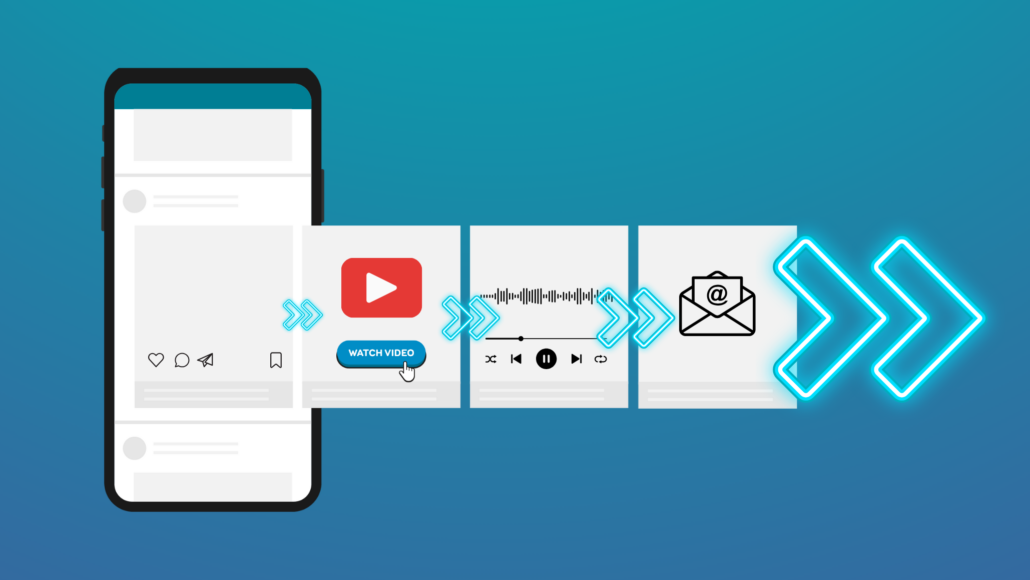
10. Dynamic content optimization
AI automatically adapts content by platform and audience. From short videos for TikTok to business blogs for LinkedIn, AI ensures that each message matches viewer preferences.
This means that your core message is automatically translated into the right format and tone for each channel. For example, a podcast can be converted to catchy social media posts, a blog, a short video and a series of emails. In doing so, AI analyzes what works best for each platform and adapts the content accordingly.
For marketers, this means a more efficient way of working. You create the content once and AI makes sure it is optimally adapted for each channel. This way, you reach your audience in the way they like, without taking extra time.
11. Hyperpersonalization with predictive analytics
AI goes beyond standard personalization such as "Hi Julien. It can predict customer needs and proactively provide solutions. From personalized product recommendations to fully customized content that matches the individual's needs.
By continuously learning from interactions, AI increasingly understands what your customers really want. For example, the system analyzes when someone prefers to receive mail, what type of content works best and what products are of interest. Based on these insights, it automatically adjusts communications.
Imagine this: a customer regularly views content about sustainable business. AI recognizes this pattern and causes this person to see more relevant articles, cases and products on this topic. The content is customized not only in terms of topic, but also in writing style, timing and channel of transmission.
For marketers, this means a shift from manual segmentation to a system that learns and adapts itself. The result? Content that matches exactly what your audience needs at that moment.
12. AI steering committees and Chief AI Officers.
More and more companies are appointing AI steering committees and Chief AI Officers to develop and implement AI strategies. This helps them deploy AI responsibly, effectively and sustainably and stay relevant to their audiences. This new role within organizations is becoming increasingly important.
The AI steering committee often consists of experts from different departments who work together to determine how best to deploy AI. They look at technical capabilities as well as ethical considerations and the impact on employees and customers.
The Chief AI Officer ensures that AI is not seen as a separate technology, but as part of business strategy. This person oversees all AI initiatives, ensures the right priorities and monitors the balance between innovation and responsible use.
For marketing, this means a strategic approach to AI implementation. No more isolated experiments, but thoughtful choices that align with your goals. This is how you ensure that AI really adds value to your organization and strengthens the relationship with your audience.
13. The challenge of ethics and authenticity
With AI increasingly being used to generate content and provide service in the form of chatbots, for example, it is crucial to remain authentic. Transparency about the use of AI and maintaining a human touch is necessary to build trust with your audience.
In practice, this means a careful balance between innovation and integrity. It's not just about mentioning that you're using AI, but more importantly why. Your audience appreciates it when you explain how AI improves service and what the added value is for them.
This openness works both ways. You not only show where AI plays a role, but also highlight where people make the difference. Think personalized advice, creative customization or strategic decisions. Through this combination of technology and human expertise, you build a stronger relationship with your audience.
An example: share in your blog or newsletter how you use AI to create relevant content faster, but also show how your team puts their own spin on this with unique insights and experiences. In this way, you make it clear that AI is a tool that enhances your human expertise, not replaces it.
14. AI training: the new normal
Continuous learning and AI literacy will become crucial in 2025, in part because of obligations under the AI EU Act. The first rules will go into effect Feb. 2, 2025, in the Netherlands, requiring organizations to ensure AI literacy.
Organizations are investing in ongoing AI training, promoting responsible use and leveraging AI for growth. Essential are practical role- and task-level workshops, training in recognizing biases, and AI literacy to use technology ethically and impactfully.
This requires a structural approach where teams learn how to use AI intelligently for their specific work. It is not just about technical knowledge, but rather about understanding the possibilities and limitations of AI. This is how you develop a team that makes informed choices in the use of AI tools.
From NXTLI, we support you in this with the weekly AI Marketing Friday and the monthly webinar Marketing AI in Practice. We will expand this with targeted trainings and workshops to help marketing teams increase their knowledge and deploy AI effectively. If you already have a specific need for this, let us know.
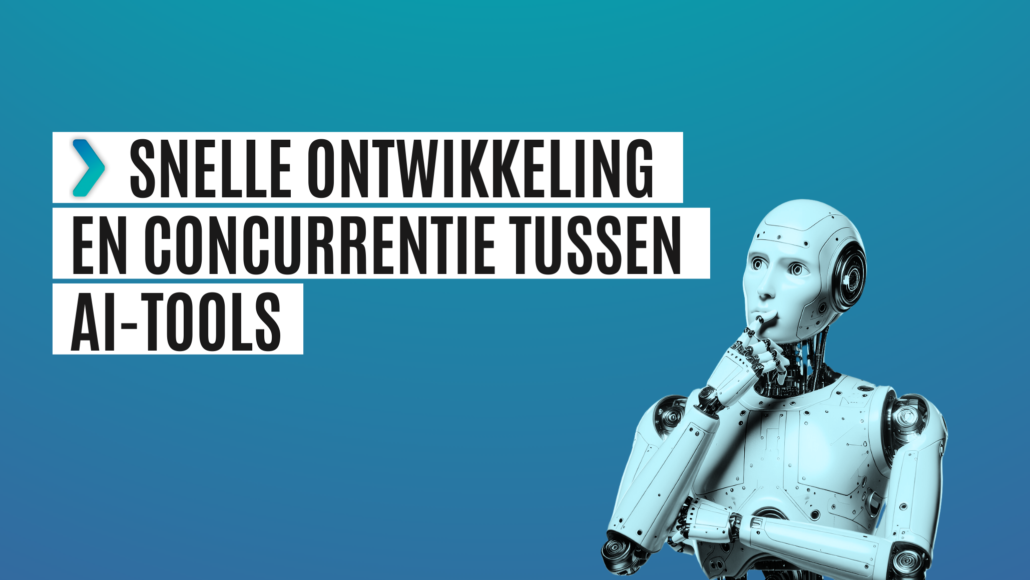
15. Rapid development and competition among AI tools
Another marketing AI trend in 2025 will be continued intense competition between AI platforms. We will face many new releases and updates. This accelerates innovation and makes for better and better tools. But it also forces people to stay flexible, continuously experiment, make choices, adopt and evaluate AI tools regularly.
This means a new way of working for marketing teams. It is no longer enough to know one tool and stick to it. You need to be able to assess which new developments are relevant to your goals and when it's time to switch to a better solution.
The biggest challenge becomes finding the right balance. Not every update requires immediate action, but waiting too long to innovate can put you at a disadvantage. Marketing teams that can quickly determine which new features are valuable AND successfully implement them will remain the most relevant. This requires a combination of curiosity, strategic insight and the ability to move quickly when needed.
16. Redefining man's role and time commitment
Finally, with all the developments we have discussed, we come to an essential question: what will be our role as humans in a world where AI takes over more and more tasks? Where do we spend our time to get satisfaction from our work and remain valuable?
This is the time to reshape our work and focus on what is truly meaningful. We see three major shifts:
1. From routine to strategy
AI is taking over more and more routine and repetitive tasks. This gives us the opportunity to focus more on strategic and creative tasks. Think about:
- Developing innovative ideas and solutions.
- Smartly implementing and optimizing AI systems.
- Building more valuable relationships with customers and colleagues.
- Making informed ethical choices.
2. More focus on human skills
Precisely what makes us unique becomes more important: our capacity for empathy, intuition, emotion, creativity and looking at something from different insights and context. This can be seen in:
- Coming up with distinctive concepts.
- Understanding what really moves people.
- Leading teams in an AI-driven environment.
3. More conscious user of time
With AI freeing up time, we can use our time differently. How do we use that time to not only work and live more productively, but also happily and meaningfully?
- More room for innovation and development.
- Attention to well-being and reflection.
- Contribute to larger social issues.
So there are many different marketing AI trends that will come into play. In this, it is important to find the right balance. How do you combine the best of AI with human qualities? The basis for success lies in continuing to learn, deepening your expertise and making conscious choices in what you spend your time on.
For marketers, this represents an opportunity to work fundamentally differently. Strategically deploying AI for executive tasks such as customer service, content management and data analytics creates space for where people really make a difference: thinking strategically and creatively, building authentic customer relationships and exploring new opportunities.
The future demands a combination of technology and humanity. Not either AI or humans, but humans and AI together. By thinking about this now and experimenting with it, you will be ready for what is to come.
Take a leap forward in your marketing AI transformation every week
Every Friday, we bring you the latest insights, news and real-world examples on the impact of AI in the marketing world. Whether you want to improve your marketing efficiency, increase customer engagement, sharpen your marketing strategy or digitally transform your business. 'Marketing AI Friday' is your weekly guide.
Sign up for Marketing AI Friday for free.
